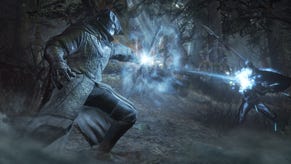Revealed: Dark Souls 3's special treat for series veterans
SPOILERS! Digital Foundry unveils a remarkable video comparison.
Dark Souls 3 has plenty of surprises in store for fans - one of which we've been meaning to cover since its launch. For those who haven't progressed to the game's final third, we'd recommend bailing out on this article for now. It's a great moment and we'd rather not spoil it.
So here's a final warning:
SPOILERS BELOW!
With Dark Souls 3 being touted as the series' final bow, the game is keen to inject some special, fan-pleasing nostalgia into the mix. One of the biggest twists is a shock return to Anor Londo - the gleaming, sun-kissed capital at the heart of the very first Dark Souls. It's an area undoubtedly etched in the minds of anyone who finished the first game, and it makes a grand return in Dark Souls 3, hundreds - possibly thousands - of years on.
Except this isn't at all as we remember it. A lot has changed in the interim; the palace has fallen to visible levels of decay, it's frozen over, its pillars have cracked, and the kingdom is now bathed in moonlight. As a point of comparison, it's a fascinating subject for fans eager to piece together the series' lore. On a technical slant, seeing such a familiar spot revived on current-gen machines is also a real thrill, giving us a direct comparison showcasing the technological leap offered by From Software's latest engine.
The studio gives the area a thorough overhaul on PS4, Xbox One and PC. Anor Londo's bridges are lined with higher resolution maps in Dark Souls 3, some loosely based on the original game's assets, while others use fresh designs. Gargoyles and pillars are more intricately sculpted too, doing away with the low-poly constructs we saw on last-gen. In direct comparison, Anor Londo's original form comes across as a tad plain - in part an artistic choice to create a barren, lonely environment. But in another sense, the studio clearly had bigger plans for its regal décor, had the processing power been there.
The changes between Dark Souls 1 and 3 aren't purely superficial either. Pathways near the central elevator spire have crumbled away, forcing players to explore an entirely different side of the kingdom. Segments of this level are blocked off with a knowing nod to players, and one of my well-rehearsed runs from bonfire to Ornstein and Smough has completely caved through. In another spot, an enclosure that once housed another bonfire, we see an entirely new alleyway carved out.
Looking to the horizon, Lordran's terrain has also shifted to radical degrees - spelling out just how much time has passed. A new palace construct is perched on a distant cliff, for example, while the mountains nearby are seemingly leveled out. Meanwhile, huge chunks of Anor Londo are either vanished away, or sunk below the central elevator, opening up a horizon of trees and hills that was once obscured in the first Dark Souls.
The pristine capital we saw in the original is gone, but some things haven't changed. The framework of what remains is exactly as you remember it, as if lifted directly from the original, and then embellished. Each pillar is placed in the same precise spot, and even the central elevator moves to the same rhythm - with that same, uncanny, snap animation to your character on pushing the lever. It's all very familiar, but now rendered at previously unseen levels of detail, with physically-based lighting and new decorative details strewn across the area.
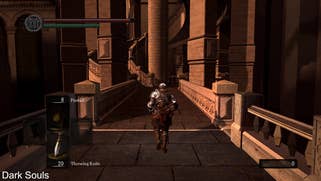

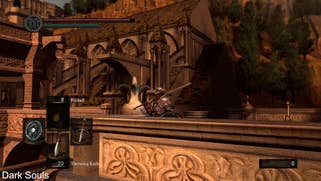

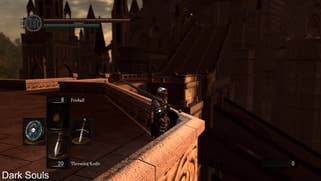
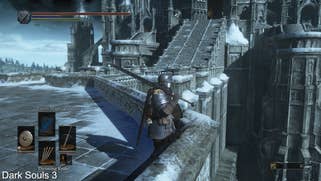


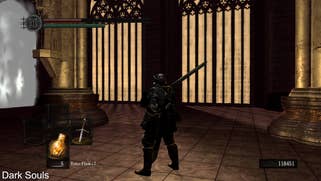
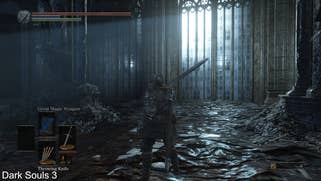

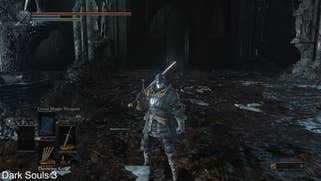
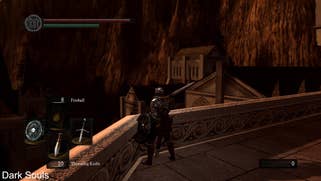
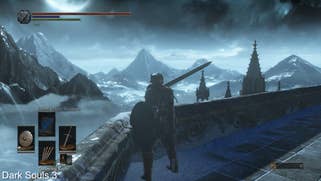
It's the final chamber that gives us the biggest walk down memory lane; a place with some serious history. It's now completely waterlogged, debris lines the base of each pillar, and curtains drape overhead - deploying cloth physics that didn't feature in the first game. Even in a state of decay it's a beautifully crafted area, and a great reminder of one of Dark Souls 1's most classic moments. Of course, this spot won't bring back the fondest of memories for many, where one infamous encounter with Ornstein and Smough explains some of the ruin on show here.
Taken as a whole, revisiting Anor Londo in Dark Soul 3 is all a bit of a surreal, melancholy experience. From Software filters through the entire location, adding a sense that time hasn't been kind to this place in general. This is far from a simple retread, and we're getting a fresh take on an area that should be very well rehearsed among Dark Souls fans. It ranks among Dark Souls 3's many high points; a rare moment to reflect on the long, hard journey taken through the series. But just as crucially, it serves to show how the series line has evolved, both technically, and in its visual direction.






